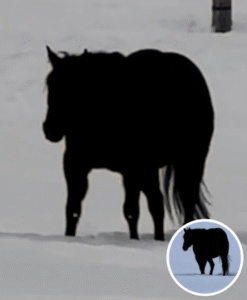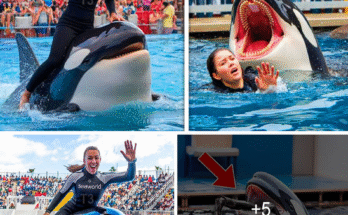
The image of a horse on a road — with its mane blowing in the wind, tail hanging naturally, and hooves mid-step — has left the internet split: is this horse walking toward or away from the camera? At first glance, it seems simple, but the answer is not as obvious as you might think.
This optical illusion has gone viral because it taps into our brain’s pattern recognition systems. When we look at an image like this, our brains try to interpret subtle visual cues such as shadows, posture, and anatomical orientation. Depending on which details we unconsciously prioritize, we might interpret the direction differently. So let’s break it down.
At first, many people believe the horse is walking toward the camera. This is largely because the mane appears to be draped over the horse’s right shoulder — something we typically associate with forward motion. Also, the way the hooves are lifted off the ground seems like a front-legged stride.
But a closer look flips the narrative. Examine the hooves: they appear slimmer, with a more tapered shape — a sign they could be the hind legs, not the front. Horses’ rear hooves are usually narrower than the front ones. Additionally, the tail is visible and appears to be hanging in a natural position — that is, away from the viewer. If the horse were walking toward the camera, the tail wouldn’t be so clearly in view unless it was swishing high in the air, which it isn’t.
Another point of analysis is the shape of the haunches and back. The rear end of a horse has a distinctive slope and roundness, which appears to match the back half of the animal in this photo. Meanwhile, the head is not visible — which supports the idea that it’s facing away from the camera.
So what’s the right answer? Based on the anatomical clues — especially the tail and the leg structure — the horse is almost certainly walking away from the camera. While the flowing mane tricks the eye into suggesting forward motion, it is likely being tossed by the wind or resting in a way that deceives viewers.
This illusion is a great example of how our perception is shaped by assumptions. Most people associate flowing manes with frontal images of horses, especially in popular media where majestic horses gallop heroically toward the viewer. That mental bias causes us to misread physical cues.
Ultimately, this viral image reminds us of the fun and frustration that comes with optical illusions. Like the famous “is the dress blue or gold?” photo or the spinning dancer silhouette, what we see isn’t always what’s real — it’s what our brain thinks is real.
So, while your first instinct might be to say the horse is approaching you, trust the details: the horse is walking away. And now you know why your brain may have tricked you into thinking otherwise.
